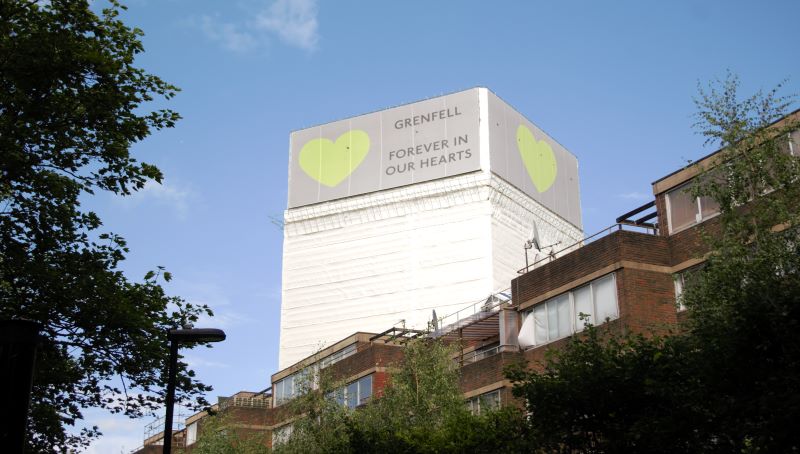
By Alistair McIntosh, HQN CEO.
We’re thinking of Grenfell today, as you will be too. Everyone says they’ll learn the lessons. I hope that we do because that hasn’t always been the case.
Clanricarde Gardens is about a ten-minute walk away from Grenfell Tower. On a freezing cold night in December 1981, fire took the lives of eight people. There are some chilling similarities between both tragedies, which raises the question: if we had kept Clanricarde in mind, could we have prevented Grenfell?
Let’s set out the differences first. Clanricarde Gardens was a row of three Victorian homes turned into bedsits, while Grenfell is a tower block with self-contained flats. And the ownership was a factor, too: Grenfell was with the Royal Borough of Kensington and Chelsea; Clanricarde was in the hands of a private landlord.
The world has changed in many ways since 1981. Do you remember the old two-pin plugs? Well, the landlord of Clanricarde hadn’t long swapped them over to the three-pin version you see today. But those homes needed a lot more fixing than that.
Now we’ll turn to the similarities, or shall we say warning signs?
The borough didn’t listen to residents. It was the job of its environmental health officers (EHOs) to enforce standards at Clanricarde. There were certainly plenty of complaints to the EHOs over the years. Despite that, the homes were still dangerous. Does this strike a chord?
Fire safety was poor. The fire-resisting doors didn’t work properly and there weren’t enough fire extinguishers. Not all of the extinguishers were full. One of the reasons that the fire spread so quickly was that some of the extinguishers were propping open the fire doors. So, you weren’t safe in your own home, and it was also hard to get out. There was only one way in and out. Why was that? The landlord created extra flats by blocking off two of the street doors. In the end the fire brigade had to rescue people from windowsills. So, the fire safety plan, if you could call it that, didn’t work.
Money was tight. Mrs Thatcher was in her pomp in 1981 so the councils had a rough ride. It may well be true that Kensington and Chelsea at that time didn’t have the boots on the ground to inspect and enforce where they needed to. It was pretty obvious that Clanricarde was a death-trap, with many people overloading the circuits to keep warm on a cold night. But no one got round to fixing that.
Did history repeat itself? By the time work was underway at Grenfell we were in the grips of austerity after the credit crunch. So, money was tight again with the borough looking to run services jointly with neighbouring councils to cut costs. Hackitt has found that some of the ways the borough tried to save money on works to Grenfell were unsound. As officers give evidence to the Inquiry, you start to appreciate just how stretched they were with a dearth of technical experts to rely on. At one time Eric Pickles said he was looking for cuts without consequences. It’ll be interesting to hear what he says to the Inquiry.
I came to London a year after the Clanricarde fire as a student on placement to the local housing action centre. Maybe that’s why it’s still on my mind. That led to working for Camden’s housing aid centre. They sent me on a course run by CPAG where the main learning point was that a service for the poor is a poor service. I’ve never forgotten that.
The victims of the fires at Clanricarde Gardens and Grenfell Tower were poor people, albeit with rich lives. Was that why no one listened to them?
Paul Knapman, the coroner at Clanricarde, was a highly experienced man, presiding over cases such as Lord Lucan’s nanny and the Marchioness boat disaster.
He captured the dilemma of cost cutting very sharply. In his capacity as a coroner he dealt with cases where homeless people froze to death on the streets in winter. Paul questioned whether it was sensible to improve homes if the landlord passed the costs on by making rents less affordable. Wouldn’t that just lead to more wretched deaths on the streets? Is he a dinosaur from our dark past? Not at all. In recent years I’ve heard serious people argue against too much enforcement in the private rented sector as it’ll only lead to gentrification. And they have a point. Where would poor people live?
Eradicating the dilemmas forced on us by not having enough money would be a fitting legacy of Grenfell.
(Thanks to Michael O’ Dwyer, who acted for the victims of Clanricarde Gardens, for sending me the ombudsman’s report, coroner’s summing up, contemporary press reports, and his own briefing notes. All errors are mine.)





